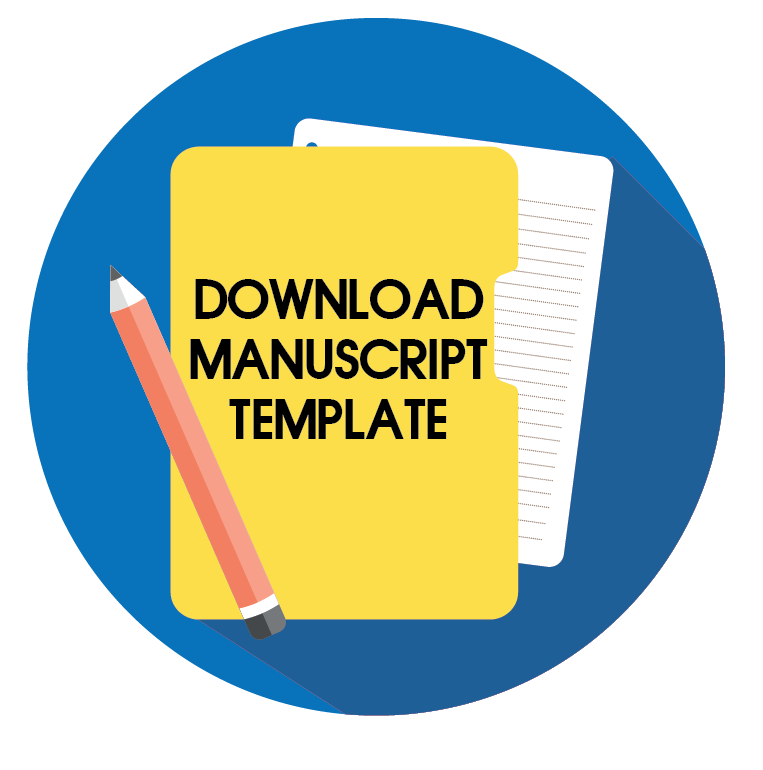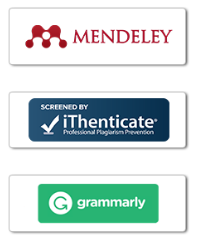Model Pembelajaran Flipped PBL Untuk Meningkatkan Kemampuan Berpikir Kritis Siswa
Yurniwati Yurniwati, Universitas Negeri Jakarta, Indonesia
Nurjannah Nurjannah, Universitas Negeri Jakarta, Indonesia
Abstract
Keywords
Full Text:
PDFReferences
Abdulah, A., Mustadi, A., & Fitriani, W. (2021). PBL-Based Interactive Multimedia in Improving Critical Thinking Skills. JPI (Jurnal Pendidikan Indonesia), 10(1), 136. https://doi.org/10.23887/jpi- undiksha.v10i1.25521
Akçayır, G., & Akçayır, M. (2018). The flipped classroom: A review of its advantages and challenges. Computers and Education, 126(January), 334–345. https://doi.org/10.1016/j.compedu.201 8.07.021’
Al-Zoubi, A. M. (2021). Flipped classroom strategy based on critical thinking skills: Helping fresh female students acquiring derivative concept. International Journal of Instruction, 14(2), 791–810. https://doi.org/10.29333/iji.2021.1424 4a
Amin, S., Utaya, S., Bachri, S., Sumarmi, & Susilo, S. (2020). Effect of problem- based learning on critical thinking skills and environmental attitude. Journal for the Education of Gifted Young Scientists, 8(2), 743–755. https://doi.org/10.17478/jegys.650344
Apriliana, L. P., Handayani, I., & Awalludin, S. A. (2019). The Effect of a Problem Centered Learning on Student’s Mathematical Critical Thinking. JRAMathEdu (Journal of Research and Advances in Mathematics Education), 4(2), 124– 133. https://doi.org/10.23917/jramathedu.v 4i2.8386
Bergmann, J., & Sams A. (2011). Flipped Your Classroom. In Journal of Physics A: Mathematical and Theoretical (Vol. 44, Issue 8). https://www.rcboe.org/cms/lib/GA019 03614/Centricity/Domain/15451/Flip_ Your_Classroom.pdf
Birgili, B., Seggie, F. N., & Oğuz, E. (2021). The trends and outcomes of flipped learning research between 2012 and 2018: A descriptive content analysis. Journal of Computers in Education, 8(3), 365–394. https://doi.org/10.1007/s40692-021- 00183 y
Cai, L., Li, Y.L., Hu, X.Y., Li, R., & Khoshnood, A. (2022). Implementation of flipped classroom combined with case-based learning: A promising and effective teaching modality in undergraduate pathology education. Medicine (United States), 101(5), 28782. https://doi.org/10.1097/MD.00000000 00028782
Damayanti, S. A., Santyasa, I. W., & Sudiatmika, A. A. I. A. R. (2020). Pengaruh Model Problem Based-Learning Dengan Flipped Classroom Terhadap Kemampuan Berpikir Kreatif. Jurnal Kependidikan: Penelitian Inovasi Pembelajaran, 4(1), 83–98. https://doi.org/10.21831/jk.v4i1.25460
Dziuban, C., Graham, C. R., Moskal, P. D., Norberg, A., & Sicilia, N. (2018). Blended learning: the new normal and emerging technologies. International Journal of Educational Technology in Higher Education, 15(1), 1–16. https://doi.org/10.1186/s41239- 017-0087-5
Engeness, I. (2021). Developing teachers’ digital identity: towards the pedagogic design principles of digital environments to enhance students’ learning in the 21st century. European Journal of Teacher Education, 44(1), 96–114. https://doi.org/10.1080/0261976 8.2020.1849129
Fajari, L. E., Sarwanto, & Chumdari. (2020). Improving elementary school’s critical thinking skills through three different learning media viewed from learning styles. Journal of E-Learning and Knowledge Society, 16(1), 55-65. https://doi.org/10.20368/1971- 8829/1135193
Faiziyah, N., & Priyambodho, B. L. (2022). Analisis Kemampuan Berpikir Kritis Dalam Menyelesaikan Soal Hots Ditinjau Dari Metakognisi Siswa. AKSIOMA: Jurnal Program Studi Pendidikan Matematika, 11(4), 2823. https://doi.org/10.24127/ajpm.v11i4.5918
Fung, C. H., Besser, M., & Poon, K. K. (2021). Systematic Literature Review of Flipped Classroom in Mathematics. Eurasia Journal of Mathematics, Science and Technology Education, 17(6), 1–17. https://doi.org/10.29333/ejmste/10900
González‐pérez, L. I., & Ramírez‐montoya, M. S. (2022). Components of Education 4.0 in 21st Century Skills Frameworks: Systematic Review. Sustainability (Switzerland), 14(3), 1–31. https://doi.org/10.3390/su14031493
Lo, C. K., Lie, C. W., & Hew, K. F. (2018). Applying “First Principles of Instruction” as a design theory of the flipped classroom: Findings from a collective study of four secondary school subjects. Computers and Education, 118, 150–165. https://doi.org/10.1016/j.compedu.201 7.12.003
Lundin, M., Bergviken Rensfeldt, A., Hillman, T., Lantz-Andersson, A., & Peterson, L. (2018). Higher education dominance and siloed knowledge: a systematic review of flipped classroom research. International Journal of Educational Technology in Higher Education, 15(1). https://doi.org/10.1186/s41239-018- 0101-6
Murtiyasa, B., & Perwita, W. R. G. (2020). Analysis of mathematics literation ability of students in completing PISA-oriented mathematics problems with changes and relationships content. Universal Journal of Educational Research, 8(7), 3160–3172. https://doi.org/10.13189/ujer.2020.080 745
O’Reilly, C., Devitt, A., & Hayes, N. (2022). Critical thinking in the preschool classroom - A systematic literature review. Thinking Skills and Creativity, 46(May). https://doi.org/10.1016/j.tsc.2022.101 110
Oliván-Blázquez, B., Aguilar-Latorre, A., Gascón-Santos, S., Gómez-Poyato, M.J., Valero-Errazu, D., Magallón- Botaya, R., . . . Porroche-Escudero, A. (2022). Comparing the use of flippedclassroom in combination with problem-based learning or with case-based learning for improving academic performance and satisfaction. Active Learning in Higher Education. https://doi.org/10.1177/1469787 4221081550
Paristiowati, M., Cahyana, U., & Bulan, B.I.S. (2019). Implementation of Problem-based Learning –Flipped Classroom Model in Chemistry and Its Effect on Scientific Literacy. Universal Journal of Educational Research, 7(9A), 56–60. https://doi.org/10.13189/ujer.20 19.071607
Partnership for 21st Century Learning. (2009). Framework for 21st century learning. Partnership for 21st Century Learning, 1–2. http://static.battelleforkids.org/d ocuments/p21/P21_framework_0816_2pgs.pdf%0Ahttp://www.p21.org/our-work/p21-framework
Pilu, R., & Nur, S. (2023). Trends and Outcomes in Flipped Learning-Based Instruction in Teaching Reading: Systematic Literature Review. LLT Journal: Journal on Language and Language Teaching, 26(1), 183–199.https://doi.org/10.24071/llt.v26i1.4669
Qondias, D. ., Lasmawan, W. .,Dantes, N., & Arnyana, I. B. P. .(2022). Effectiveness of Multicultural Problem-Based Learning Models in Improving Social Attitudes and Critical Thinking Skills of Elementary School Students in Thematic Instruction. Journal of Education and E-Learning Research, 9(2), 62–70. https://doi.org/10.20448/jeelr.v 9i2.3812
Ramadhani, R., Umam, R., Abdurrahman, A., Syazali, M. (2019). The Effect of Flipped-Problem Based Learning Model Integrated With LMS-Google Classroom for Senior High School Students. Journal for the Education of Gifted Young Scientists, 7(2), 137-158. https://doi.org/10.17478/jegys.548350
Rijal, M., Mastuti, A. G., Safitri, D., Bachtiar, S., & Samputri, S. (2021). Differences in learners’ critical thinking by ability level in conventional, NHT, PBL, and integrated NHT-PBL classrooms. International Journal of Evaluation and Research in Education, 10(4), 1133–1139. https://doi.org/10.11591/IJERE.V10I4.21408
Saepuloh, D., Sabur, A., Lestari, S., & Mukhlishoh, S. U. (2021). Improving Students’ Critical Thinking and Self- Efficacy by Learning Higher Order Thinking Skills Through Problem Based Learning Models. In JPI (Jurnal Pendidikan Indonesia) (Vol. 10, Issue 3, p. 495). Universitas Pendidikan Ganesha. https://doi.org/10.23887/jpi- undiksha.v10i3.31029
Sajidan, Suranto, Atmojo, I. R. W., Saputri, D. Y., & Etviana, R. (2022). Problem- Based Learning-Collaboration (Pbl-C) Model in Elementary School Science Learning in the Industrial Revolution Era 4.0 and Indonesia Society 5.0. Jurnal Pendidikan IPA Indonesia, 11(3), 477–488. https://doi.org/10.15294/jpii.v11i3.30 631
Sanandaji, A., & Ghanbartehrani, S. (2021). An evaluation of online flipped instruction methods during the COVID-19 pandemic. Journal of Information Technology Case and Application Research, 23(1), 46–67. https://doi.org/10.1080/15228053.202 1.1901360
Sen, E. O. (2022). Thematic Analysis of Articles on Flipped Learning in Mathematics Education. Turkish Online Journal of Distance Education, 23(April), 202–222. https://doi.org/10.17718/tojde.109644Supratman, S., Sirad, L. O. S., &
Putri, A. (2021). Kemampuan Berpikir Kritis Matematis Menggunakan Student Team Achievement Division Dan Learning Together. AKSIOMA: Jurnal Program Studi Pendidikan Matematika, 10(2), 1284. https://doi.org/10.24127/ajpm.v 10i2.3648
Susanto, T. T. D., Dwiyanti, P. B., Marini, A., Sagita, J., Safitri, D., & Soraya, E. (2022). E-Book with Problem Based Learning to Improve Student Critical Thinking in Science Learning at Elementary School. International Journal of Interactive Mobile Technologies, 16(20), 4–17. https://doi.org/10.3991/ijim.v16 i20.32951
Tan, O.-S. (2003). Problem-Based Learning Innovation: Using Problems to Power Learning in the 21st Century. Cengage Learning.
Tomesko, J., Cohen, D., & Bridenbaugh, J. (2022). Using a virtual flipped classroom model to promote critical thinking in online graduate courses in the United States: A case presentation. Journal of Educational Evaluation for Health Professions, 19. https://doi.org/10.3352/jeehp.20 22.19.5
Zhou, Z. (2018). An Empirical Study on the Influence of PBL Teaching Model on College Students’ Critical Thinking Ability. English Language Teaching, 11(4), 15. https://doi.org/10.5539/elt.v11n 4p15
Refbacks
- There are currently no refbacks.
Copyright (c) 2025 Yogi Prasetyo

This work is licensed under a Creative Commons Attribution-ShareAlike 4.0 International License.


